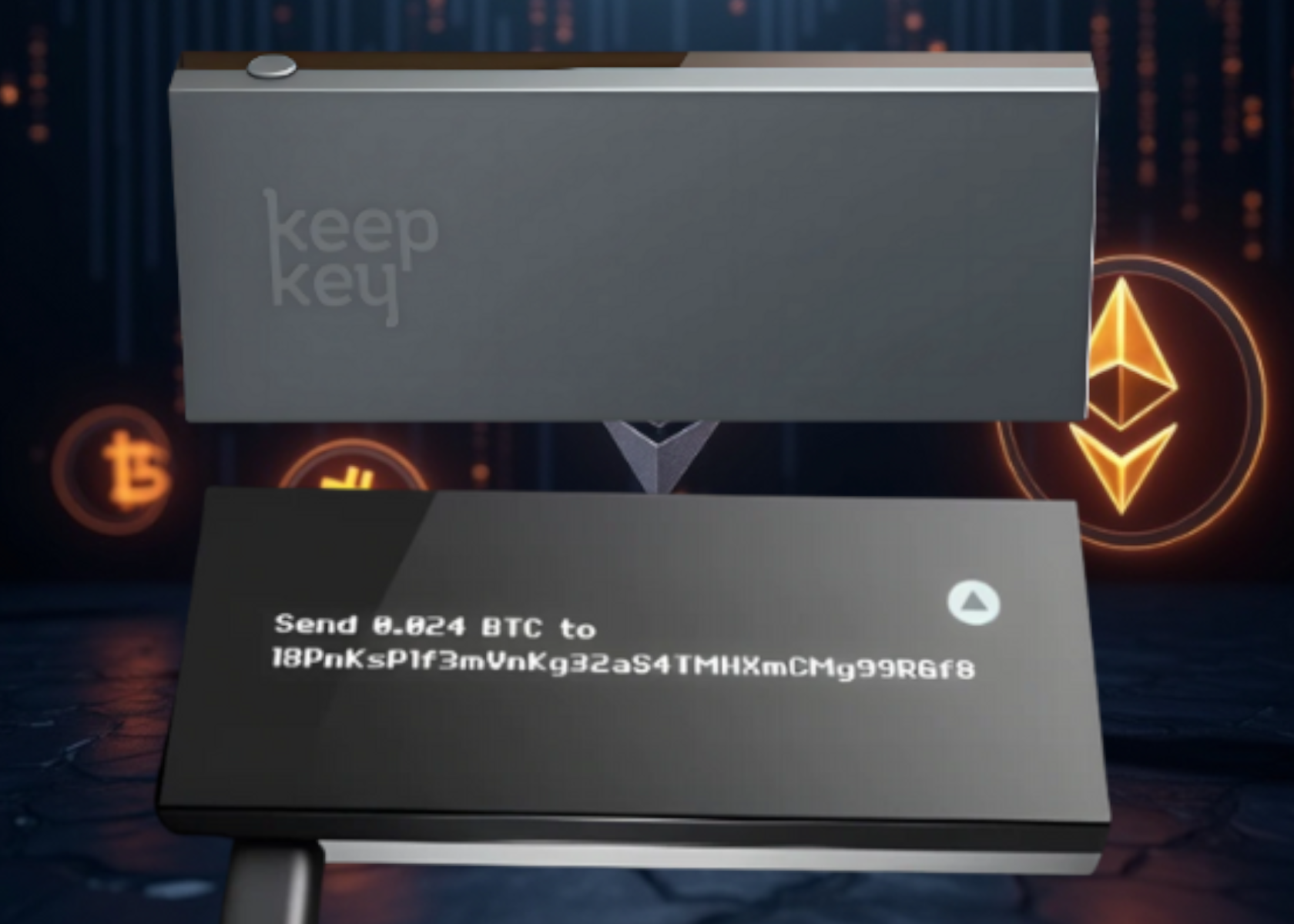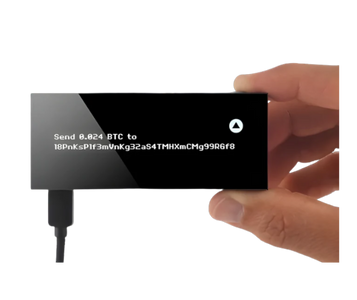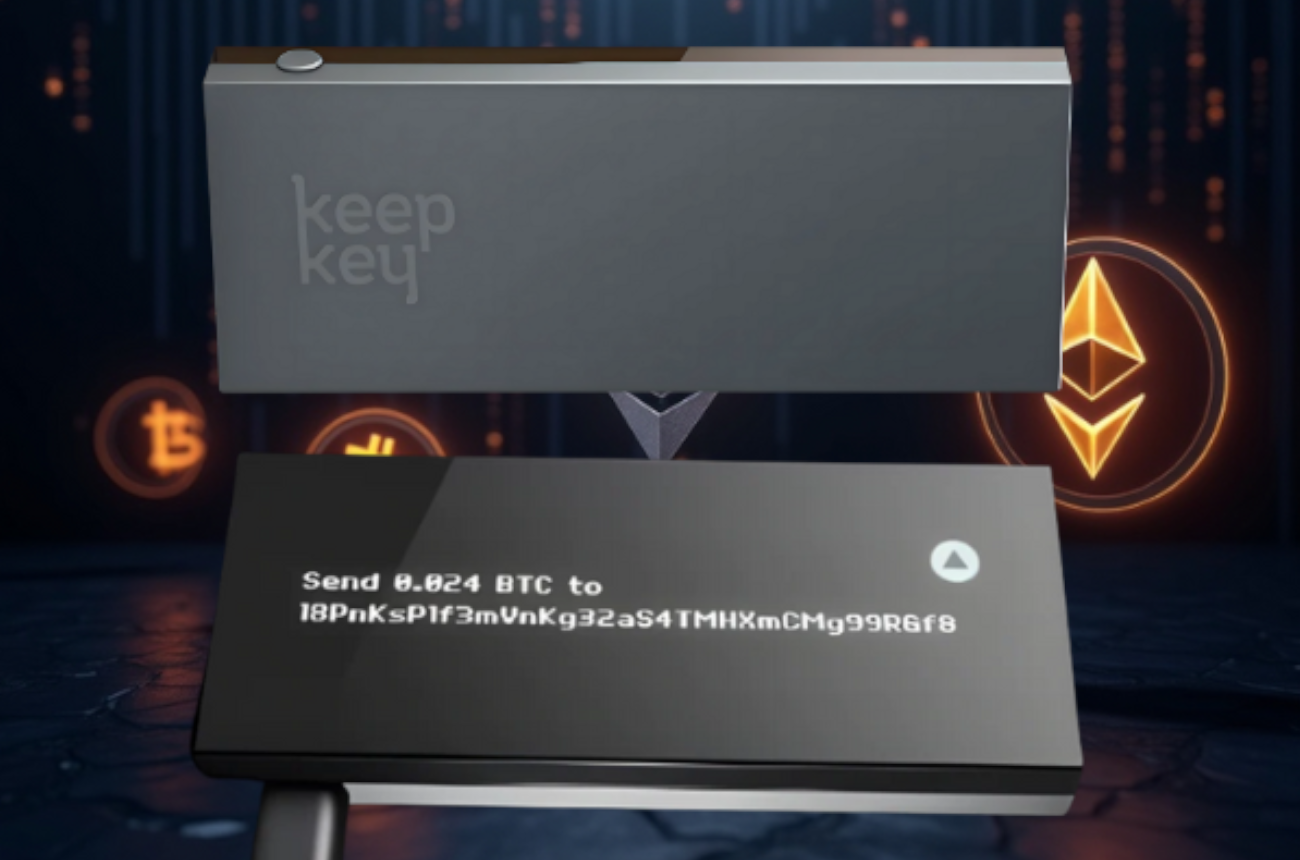KeepKey Hardware Wallet: Great Start, Quick Outgrow

If you're looking for an affordable entry into hardware wallets with broad altcoin support, the KeepKey, initially released in 2015 by ShapeShift, offers a minimalist solution. It’s one of the older devices still sold in 2025, but thanks to consistent firmware updates and integration with ShapeShift's own platform, it’s managed to stay relevant for new crypto users. Still, it’s not without limitations.
I spent a few days revisiting the KeepKey for this review, testing it with both ShapeShift and third-party wallets like Electrum and MetaMask. Here’s how it holds up in today’s landscape of more advanced cold storage devices.
Pros & Cons
KeepKey Quick Specs

- Manufacturer: ShapeShift (U.S.)
- Type: Multicoin Hardware Wallet
- Release Year: 2015 (firmware updates through 2025)
- Price: $49 USD
- Connectivity: USB-C (via micro USB adapter)
- Battery: None (must be plugged in to operate)
- Display: 256x64 pixel OLED screen
- Security: PIN code, recovery phrase (no dedicated secure element)
- Backup/Recovery: 12-word seed phrase (BIP39)
- Software Compatibility: ShapeShift Defi wallet, Electrum, MetaMask (via WebUSB)
- Supported Assets: Bitcoin, Ethereum, Litecoin, Dogecoin, Dash and more.
- Special Features:
- Pin code protection
- Passphrase support
How I Used the KeepKey
Getting started with KeepKey was simple. I plugged the device into my desktop and was directed to ShapeShift’s native wallet interface. From there, I generated a 12-word recovery phrase and chose a PIN code. The setup was smoother than I expected, ideal for beginners.
To test Bitcoin storage, I created a BTC account and sent a small deposit to the address shown on the KeepKey screen. Confirmations were displayed clearly, and I manually verified the address before sending.
For Ethereum and token support, I synced the device with MetaMask using the WebUSB bridge. That let me access DeFi apps and view balances, though it wasn’t as seamless as Ledger’s direct integration. I successfully sent USDC and held Polygon crypto tokens. While it doesn’t natively support low market cap meme coins or more exotic projects like OnyxCoin or $PEPE, any ERC-20 token with a contract address can technically be stored.
Rating (Overall: 3/5)
KeepKey: Minimal Cold Storage for Modest Crypto Portfolios
KeepKey is a functional entry-level hardware wallet with a fair price point, but it’s starting to show its age. With no secure element chip and no support for modern connectivity features like Bluetooth or NFC, it lacks the hardware-level security and versatility seen in newer competitors. While its larger screen does make transaction verification more convenient—a definite usability win—the tradeoff is significant when you consider that wallets like the Ledger Nano S Plus or Safepal S1 offer better security architecture at a similar or even lower cost.
Even for under $50, it’s hard to recommend the KeepKey over these more up-to-date alternatives unless the oversized screen is a priority for your specific use case. It’s certainly safer than using a hot wallet or browser extension wallet, and it still supports a wide range of cryptocurrencies via ShapeShift. But from a cold storage perspective, I personally feel more confident spending that money on devices with a stronger security foundation and broader development support.
Lukas is your trusted guide for navigating the best crypto hardware wallets of 2025. Their deep dives cut through the noise, empowering you to protect your digital assets. Explore more of their invaluable resources here:
- Best Bitcoin-Only Hardware Wallets of 2025 – For maximalists who value simplicity and sovereignty.
- Best Metal Seed Phrase Backups in 2025 – The only way to protect your seed words from fire, water, and time.
- Top 20 Hardware Wallets for Crypto Cold Storage – A complete guide to the most secure and trusted devices available today.
- Best Biometric Hardware Wallets in 2025 – Because privacy and convenience don’t have to be opposites.
- Best Credit Card-Sized Hardware Wallets in 2025 – Perfect for semi-cold storage and covert carry.
- Top 6 Hardware Wallets for NFTs in 2025 – Yes, even your digital collectibles deserve cold storage.
FAQs
- What is KeepKey?
KeepKey is a budget-friendly hardware wallet designed for long-term cold storage of cryptocurrencies. It supports major coins like Bitcoin, Ethereum, and a variety of ERC-20 tokens like Shiba Inu $SHIB, Enjin Coin $ENJ and Illuvium $ILV . While it offers a sleek design and a large screen for easier transaction verification, it lacks some of the advanced security features found in the best crypto hardware wallets, such as a certified secure element chip or air-gapped functionality.
- Is KeepKey one of the best crypto hardware wallets in 2025?
KeepKey offers solid basic cold storage, especially for beginners or those managing smaller portfolios. However, in 2025, many users may prefer more secure and modern alternatives like the Ledger Nano S Plus or SafePal S1, which offer stronger security features at a similar price point. Still, if ease of use and screen visibility are your priorities, KeepKey remains a decent entry-level choice.
- Does KeepKey support Helium, $Pi Coin, or Melania Coin?
KeepKey supports a wide range of coins through ShapeShift integration, including Bitcoin, Ethereum, Litecoin, and many ERC-20 tokens. However, it does not currently support Helium $HNT, Pi Coin $PI, or Melania Coin $MELANIA natively. Always consult the official list of supported assets to confirm if newer or alternative coins are compatible.
- Can I store new and upcoming cryptocurrencies on KeepKey?
KeepKey does support many alternative coins and tokens via third-party integrations, but it may not keep up with the pace of new and upcoming cryptocurrencies, especially those outside the Ethereum ecosystem. If you're actively investing in low market cap altcoins or meme coins, make sure they're ERC-20 compatible or check compatibility before relying on KeepKey for cold storage.
Testimonials
Special thanks to KeepKey and The CryptoDad for their in-depth tutorials. Their content was invaluable in helping me confidently set up and use my KeepKey the right way:
Subscribe to the Markets Outlook newsletter
Related Posts

Ledger Nano S Plus Review: Simple, Secure & Affordable Crypto Storage














.svg)
